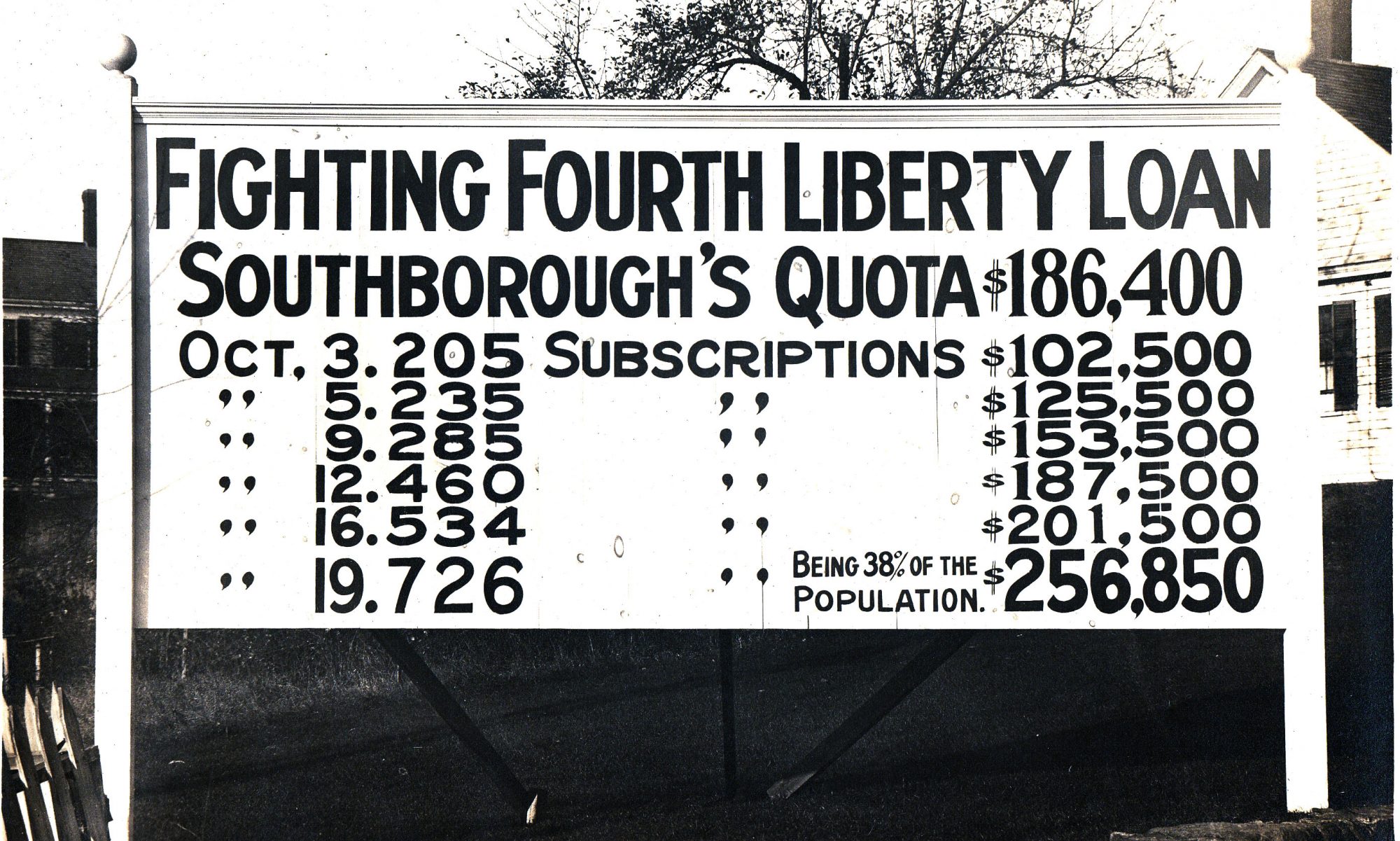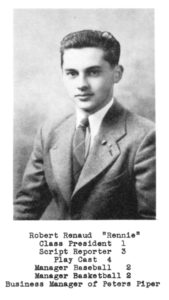Since February is Black History Month, it seems appropriate to look at the life of William Washington who lived in Southborough over a century ago with his family.
In the midst of all the angst created by the “St. Mark’s Triangle” debacle, concern arose about how best to honor some of the marginalized people in early Southborough who might not have been buried within the walls of the Old Burial Ground. Of greatest concern was that all the tree removal and heavy construction work might have desecrated burials of the original inhabitants of the area, the Nipmucs. After much prodding. St. Mark’s School, the owners of the land, agreed to an archeological dig to discover whether there were any burials in the disturbed area. Around Labor Day, a limited dig was conducted. To the surprise of many, most of the dig took place on town owned land near the library rather than in the area owned by St. Mark’s that had been most disturbed, the site of possible native burials, and therefore of most concern. An important result of the dig is that some artifacts were uncovered as well as remnants of foundations of two buildings. After examining old maps and descriptions of the area, it seems probable that one of the foundations was a house owned by Joseph Burnett, located on what is now town library property. Further investigation revealed that house was once occupied by William E.J. Washington, the first free black man to live in Southborough.
The sections about the Washington family in Nick Noble’s Fences of Stone, A History of Southborough Massachusetts, paint a picture of a very industrious family that was integrated into the life of the community. Several of the Washington men were welcomed as members of St. Mark’s Church choir. The athletic talents of the oldest son, Edwin, were admired. We also learn that William, and then two of his sons, Edwin and Frederick, served as sextons at St. Mark’s Church. William worked at Deerfoot Farm before becoming steward at St. Mark’s School. After serving as William’s assistant for several years, Edwin replaced his father as steward when William moved back to Marlborough around 1904.
William became a bit of a legend at St Mark’s School when, in 1899, while on his rounds as night watchman, he noticed something strange about the lighting in the basement of the school room building. Investigating further, he discovered that there was a gas leak Unfortunately, when he opened the door to the basement, the lantern he was carrying set off an explosion and fire. Despite suffering serious burns, he alerted others to the fire and then tried to put it out with a hose he dragged to the cellar. He had to be pulled out of the burning building by several St Mark’s students who then fought the fire until the fire department arrived. A grateful headmaster presented William with a check from the school to thank him for his heroic efforts.
It seems as if life in Southborough was quite good for the Washington family. St. Mark’s Church, St. Mark’s School and the Burnett family all played a role in making their lives in town pleasant. Their acceptance was certainly aided by the contributions the Washington family made to town life
Slavery was abolished in Massachusetts in 1783, so who was this man, William Washington, who after at least 110 years with no known blacks living in Southborough, moved with his family into a house in the heart of town? Where was he from and what happened to him and his family after they left Southborough?
William Everland Jacob Washington was born in 1859 in Newark, New Jersey to Thomas Washington and his wife, Martha King Washington. He had four younger sisters. Both of his parents were also born in New Jersey, in 1830. According to the 1860 federal census, Thomas was a steam engineer with a personal worth of $1000. The census also indicates that both of William’s parents could read and write. Records, with the notation “black” next to their names, indicate that Martha’s parents, Jacob King, a cooper, and his wife Mary Thompson, were married at the First Presbyterian Church of Newark in 1829. Martha had six sisters. Both her parents were literate according to the census. Neither William nor his parents had ever been slaves. William was undoubtedly descended from slaves, but several generations back.
In 1879, William married Ella Mae Vanderzee in Kingston, New York. Ella was born in 1857 in Saugerties, New York to Thomas Vanderzee and his wife, Sarah Tuson. In the federal census, Thomas is listed as black and Sarah as mulatto. In another census, all the members of the family are listed as mulatto. Thomas was born in Green County, NY and Sarah was born in Dutchess County, NY. Ella was one of the younger of the 13 children in the Vanderzee family. Her father was a boatman on the Hudson River. In the 1870 federal census, she and her sisters are all listed as house servants while one of her brothers is a boatman.
After Ella’s marriage to William Washington, she worked for a short time as a servant for two white sisters, Eliza and Louisa Speer, in Newark, NJ. William and Ella’s first child, Edwin was born in Kingston, New York. They lived briefly in Brooklyn, NY before moving to Wellesley, Massachusetts where their second son, Frederick, was born in 1882. Three daughters, Alma, Edith and Adaline followed in quick succession in 1884, 1885 and 1886 while they were still living in Wellesley. By February 1889 they had moved to Boston where their son Everland Beverly Washington was born. Their four-year old daughter Edith died in Boston in April of 1889 and five-year old Alma died a few months later. Both girls died as the result of “weak hearts.” By 1891, the Washington family had relocated to Marlborough where they welcomed another son, Leo, to the family. He died, of meningitis two years later. That same year, 1893, Ella gave birth to another daughter. Vera Louise in Marlborough. In 1894, William and Ella, with their five surviving children, Edwin, Frederick, Adaline, Everland and Vera, moved into a house owned by Joseph Burnett, located on the grounds of the present-day library in Southborough. At the end of 1894, twins, Amy Claire and Allan Gannett were born. In 1897, Esther Lucilla was born and the following year Victor Bexhill joined the family.
In 1900, Ella died delivering stillborn twins. She was 43 years old and was survived by 9 of the 14 children she had borne. She was buried in Marlborough alongside her son Leo and the stillborn twins. Within a few years of Ella’s death, William moved to a house on Hildreth Street in Marlborough with his five youngest children. His move was precipitated by the fact that the house in which they had been living in Southborough was being torn down to make way for the public library. In various documents William is listed as a stationery engraver or a watchman at a shoe factory while living in Marlborough.
The life of the Washington family in Marlborough took a tragic turn as the family was ravaged by tuberculosis. The first of the children to succumb to TB was nine-year old Amy Claire who died in December 1913. Seven months later, in June 1914, her twin brother Allan Gannett died at Lakeville Sanitorium. Seven-year old Esther Lucilla died in November 1914 at Boston City Hospital. Their father, William, who had gone to live in Everett with his married daughter Vera, died less than 3 months later, in February 1915, probably from TB, Victor Bexhill Washington was nine when he died in October 1915 at Lakeville Sanatorium.
William and Ella’s oldest son Edwin, who had married Frances Chestnut in 1905, also died at the Lakeville Sanitorium in 1916 at the age of 37, leaving his widow with three young daughters. His brother Everland died in October 1916, ten months after his marriage to Viola Jones. He was 27. Between December 1913 and October 1916, six of William’s children died from tuberculosis. Although William’s death certificate could not be located, it is probable that he also died of TB. During the same time frame that the Washington family lost six, possibly seven, members to TB, only five residents in the entire town of Southborough died of TB, one of them being Edwin Washington.
What became of William’s three surviving children and his three granddaughters, the children of his son Edwin?
William’s daughter Adaline moved to Boston where she became a nurse. She lived for many years in Boston and Malden. She never married. She died in 1970 and is buried in Everett alongside her father and her sister Vera.
Of the five youngest children who moved to Marlborough with their father after the death of their mother, Vera Louise is the only one who did not die from TB. In 1914, she married Albert Lee Randolph at St. Mark’s Church in Southborough. She and Albert lived in Everett and Malden after their marriage. She had two sons and a daughter. One of her sons died at age 11 when hit by a car. In the 1950 federal census, they had three wards of the state living with them. Vera died in 1985.
Frederick Tudor Washington. the one Washington son to survive the TB scourge, lived most of his adult life in Boston. He married Daisy Mainjoy in 1906. They had a son and a daughter. According to various federal censuses, he was a painter. Fences of Stone notes that for a while he had a band that played at some dance clubs. The Echo of Their Voices, 150 Years of St. Mark’s School, says that he achieved his dream of becoming an Episcopal priest. He died in 1965.
William’s eldest son Edwin Washington, who had succeeded his father as steward at St. Mark’s School, died at age 37 leaving his widow Frances, and three young daughters. A fourth daughter had died in 1913 of whooping cough. Frances moved with her daughters to Westborough where she worked as a hairdresser. In 1929, she married Harry Elliot, a barber. He died three years later. Her oldest daughter Frances was married in 1928 to Raymond Neizer and moved to Salem. In a scenario eerily reminiscent of her mother’s life, Frances became a widow in 1932, left to raise three young children. Her sister, Ella V. Washington was married to Marceo Griffin in 1936. They moved to Florida where, in 1940, they divorced. She returned to Westborough, making it her home base as she traveled extensively throughout the world while working as an educator for organizations such as UNESCO. She died in 2003 at the age of 93. She is acknowledged by Nick Noble as a valuable source of information for his book, Fences of Stone. Edwin’s third daughter, Edith Marion never married. She died in 1978. Edwin, his wife Frances, and their daughters are all buried at Rural Cemetery in Southborough.
William and his family passed through Southborough’s history briefly, living here for just over a decade, more than a century ago. Their lives were beset by the deaths of children from childhood diseases, death in childbirth, and devastating losses from tuberculosis. Although these were not uncommon problems at that time, it seems as if the Washington family had more than their share of family misfortunes. We remember them as pioneers, the first free black family to live in town, but we also recognize them as survivors who continued to persevere and contribute to society even when the odds were against them.
Some Sources:
Fences of Stone by Nick Noble
The Echo of Their Voices, 150 Years of St. Mark’s School
United States Censuses\
Massachusetts State Censuses
Vital Records of Boston, Wellesley, Marlborough, and Southborough

